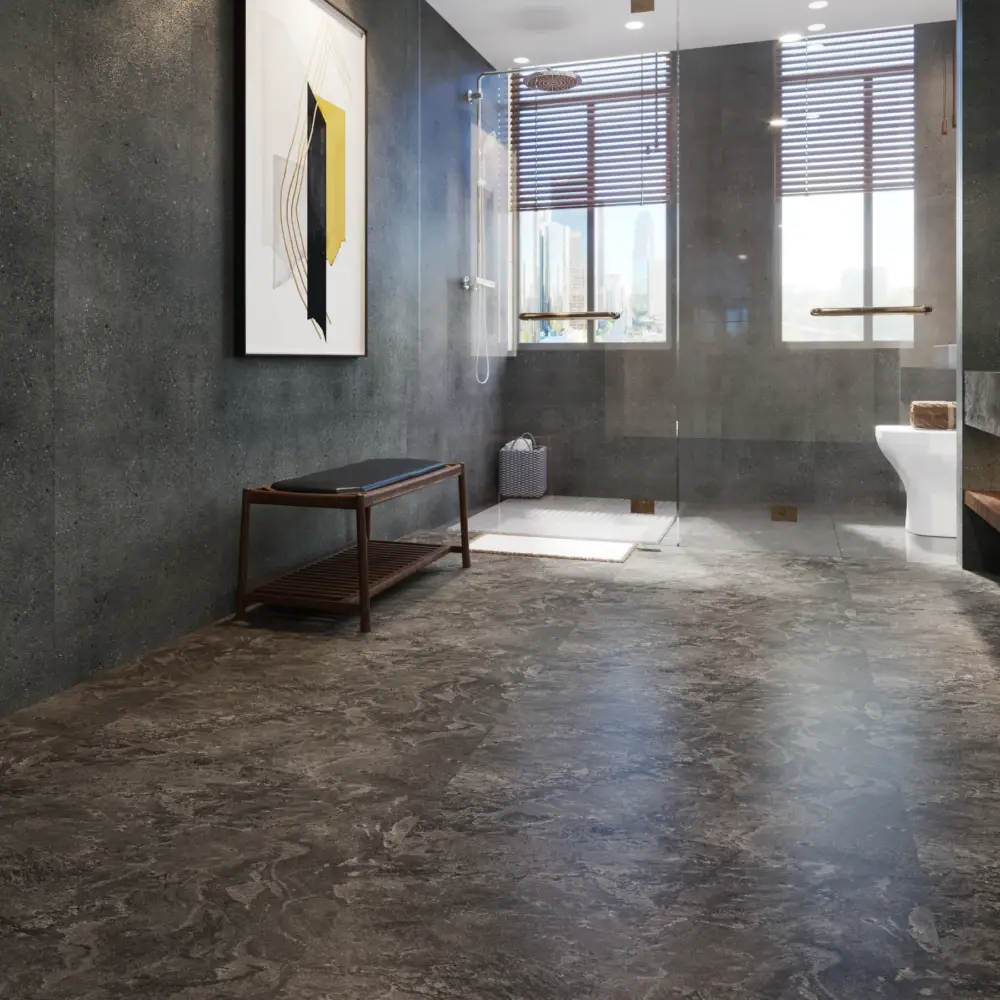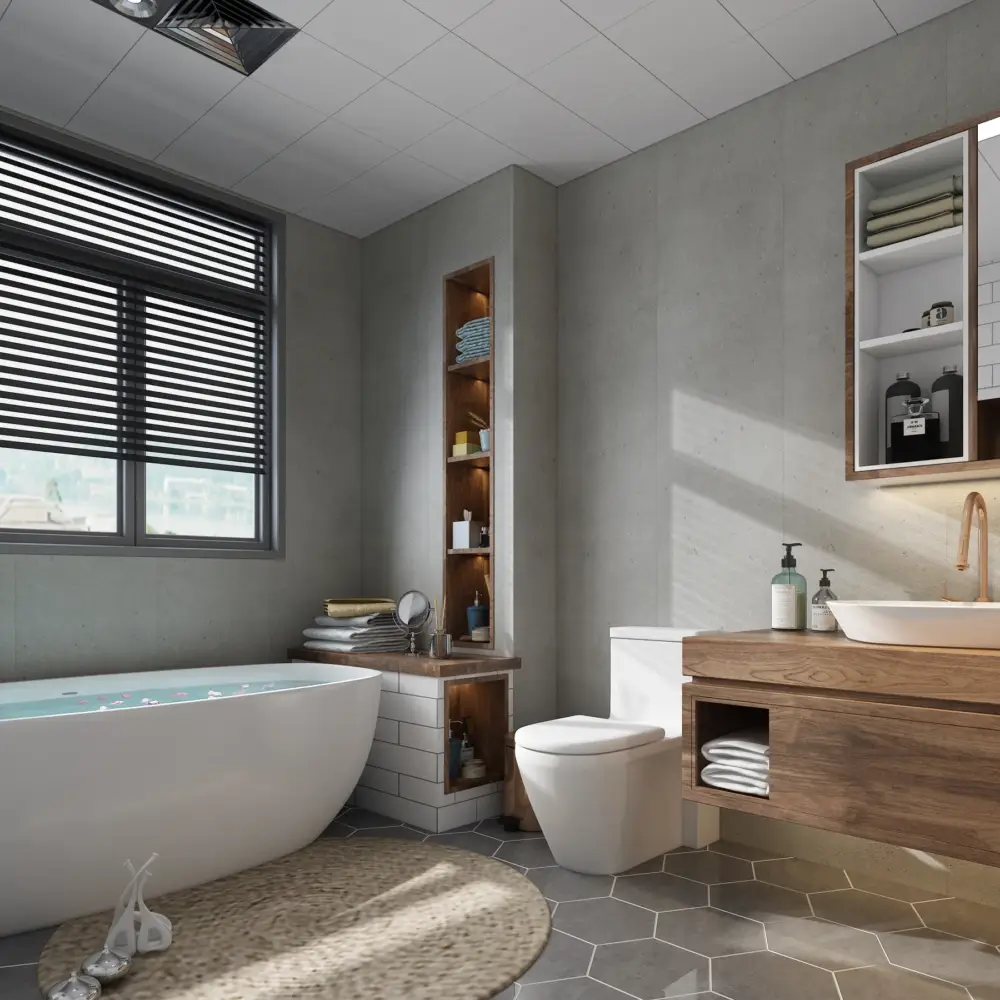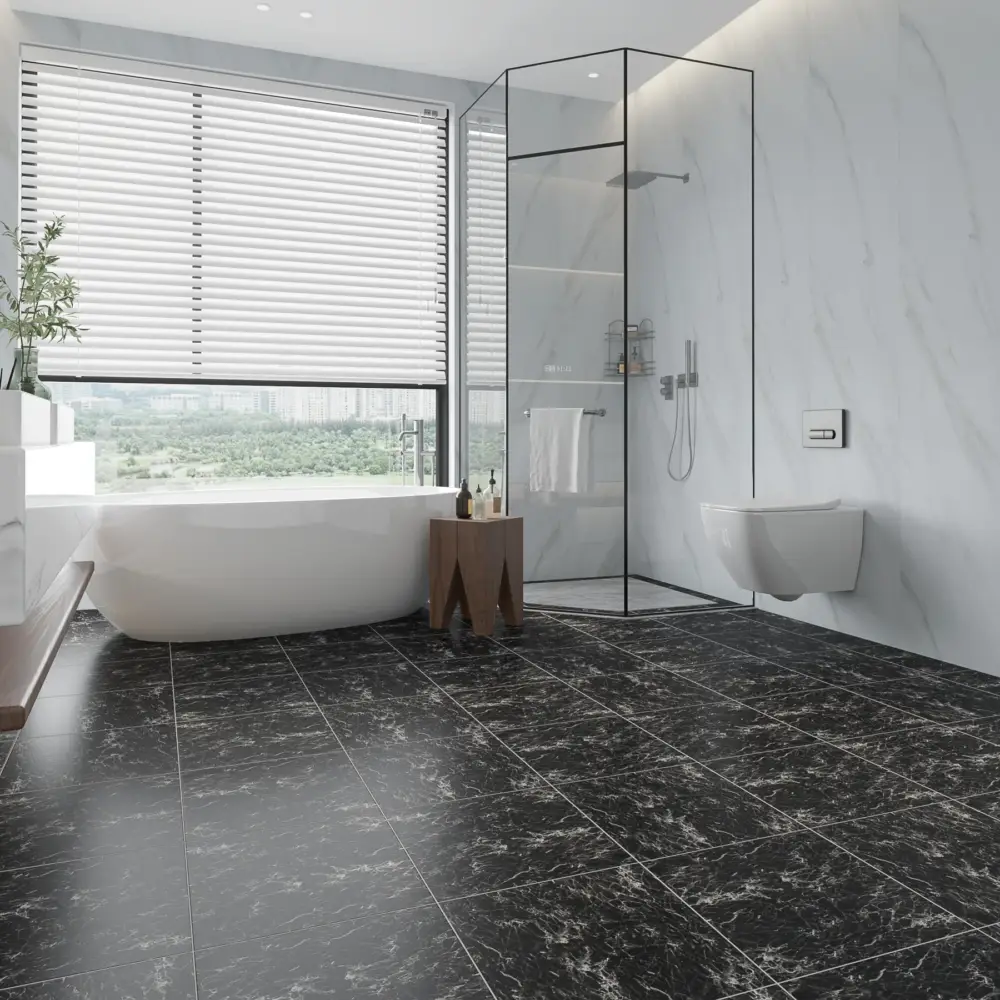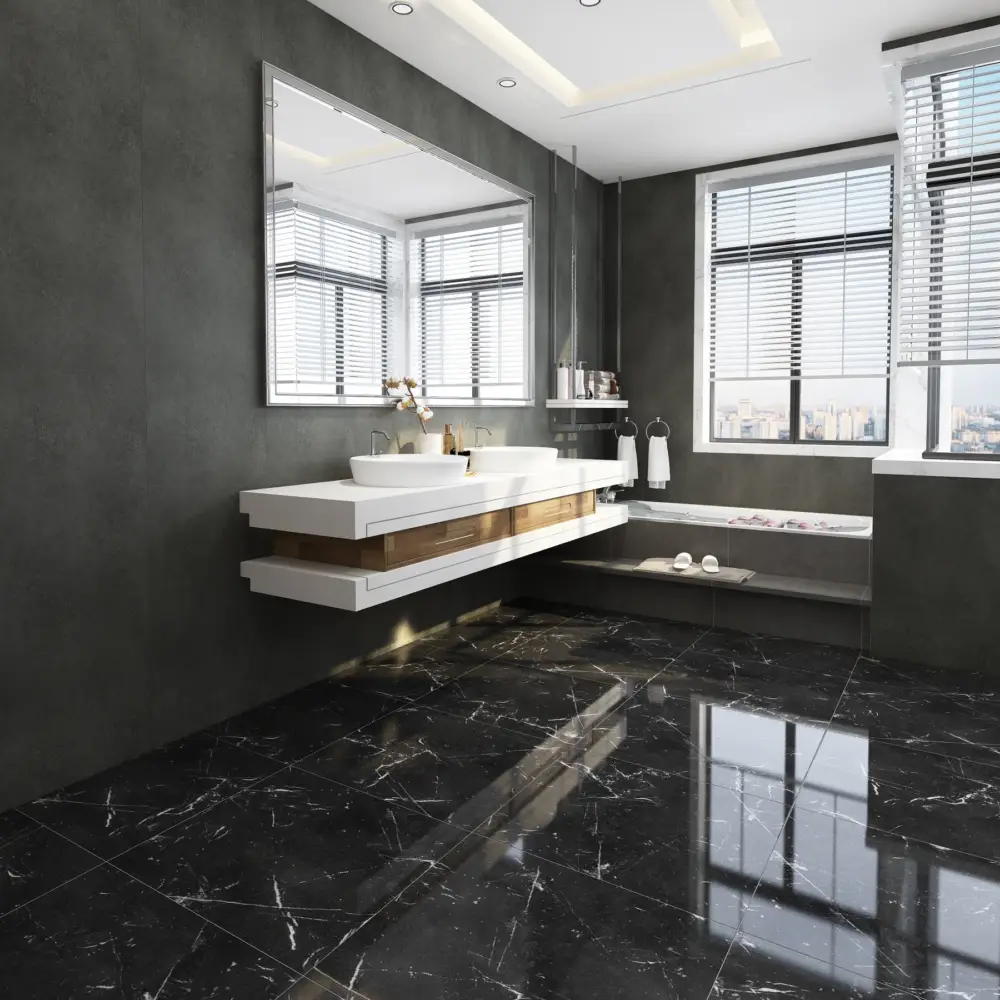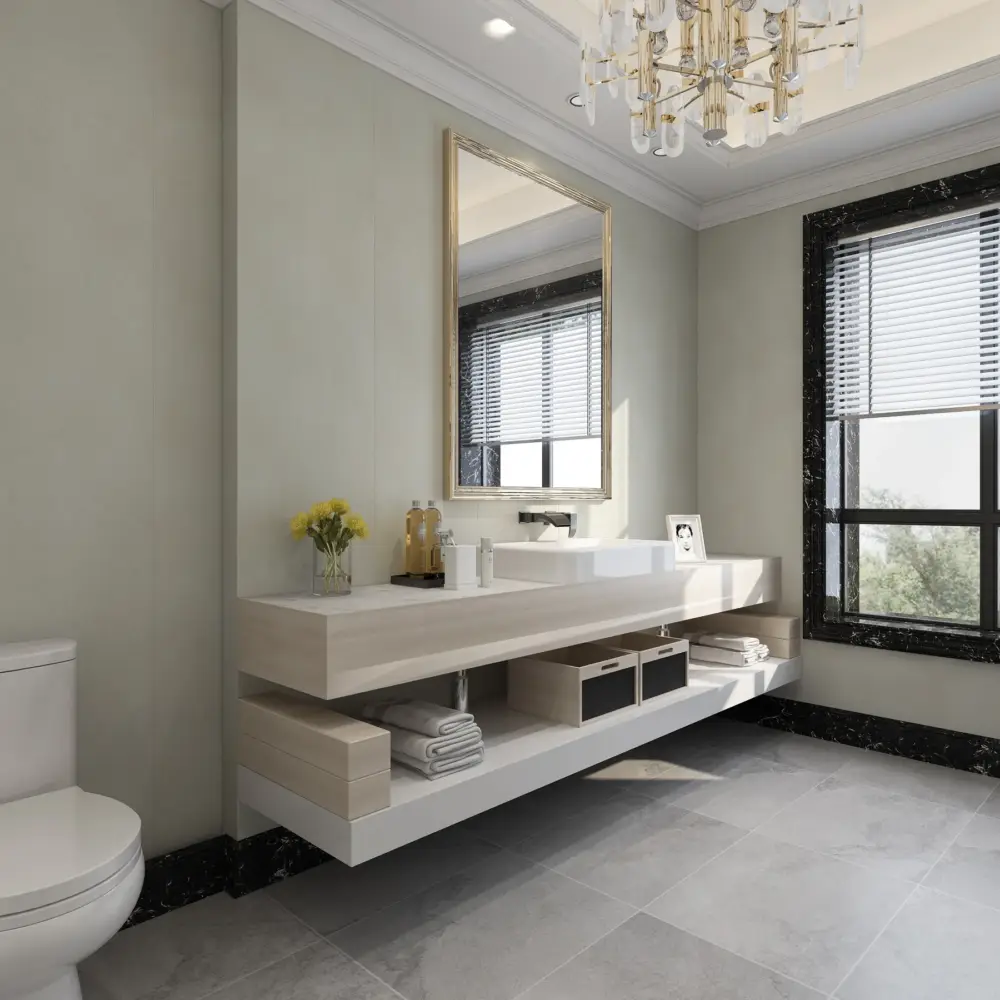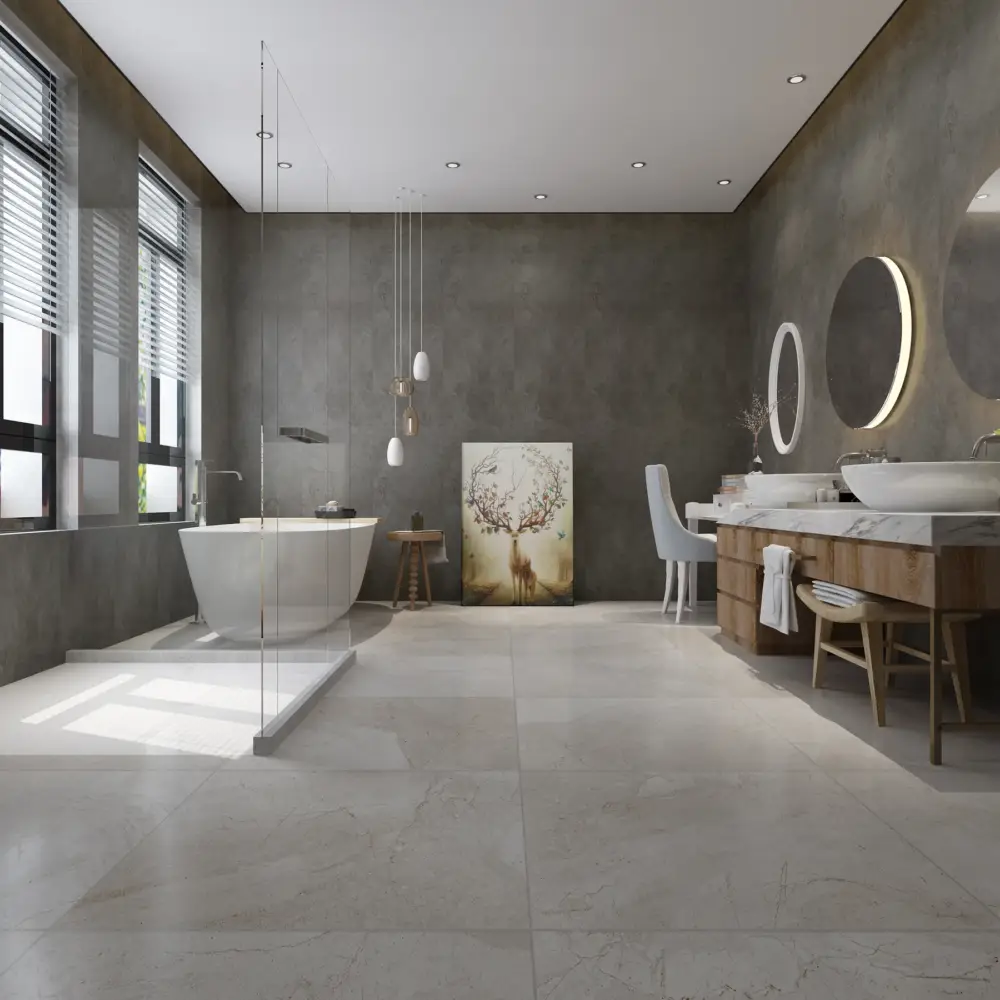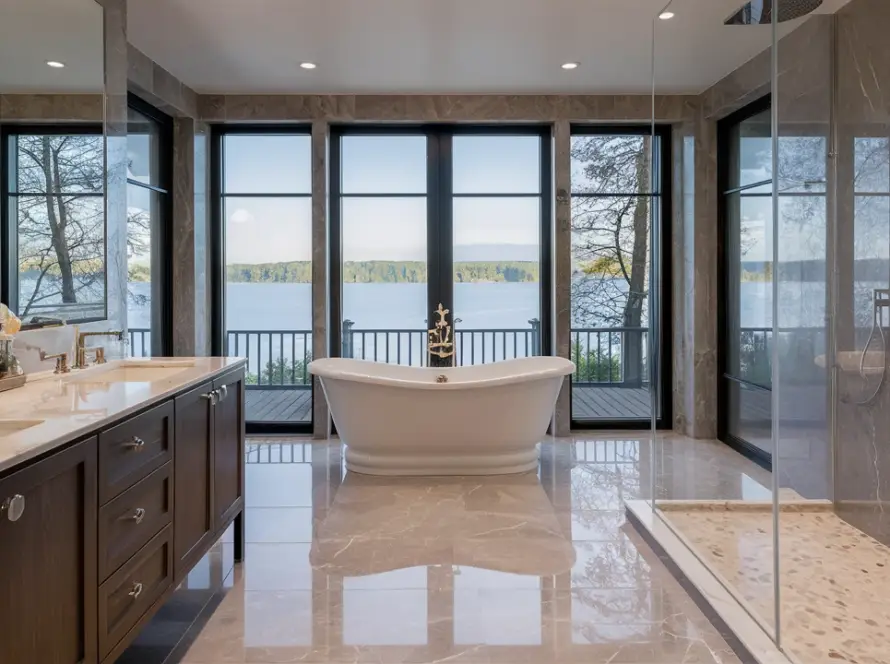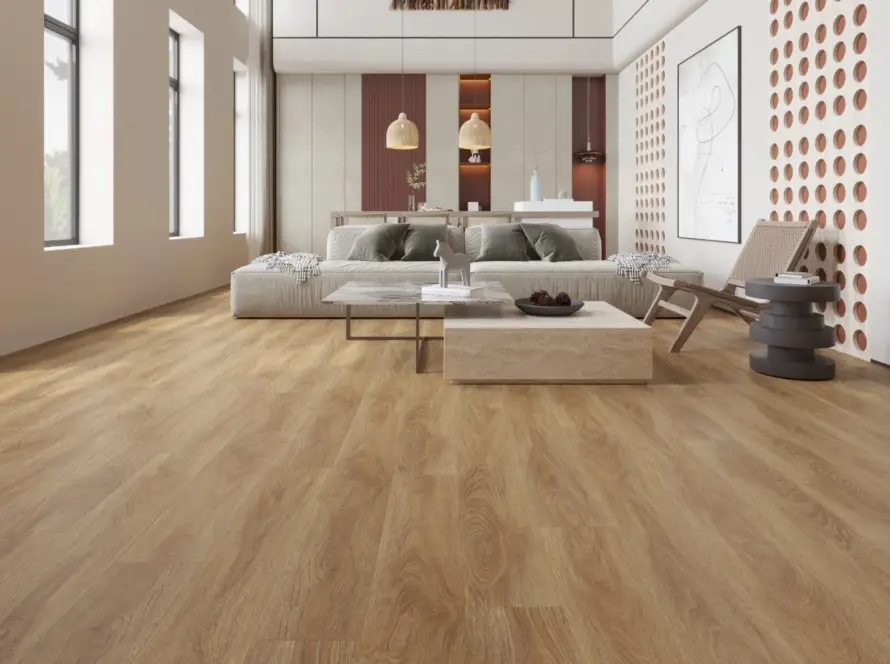Стеновая панель SPC, или каменно-пластиковая композитная стеновая панель, - это инновационный строительный материал, сочетающий в себе прочность камня и гибкость пластика. Эти панели предназначены для быстрого монтажа с использованием системы click и стальных зажимов, что позволяет устанавливать их значительно быстрее и экономичнее, чем традиционные материалы, такие как плитка или мрамор.
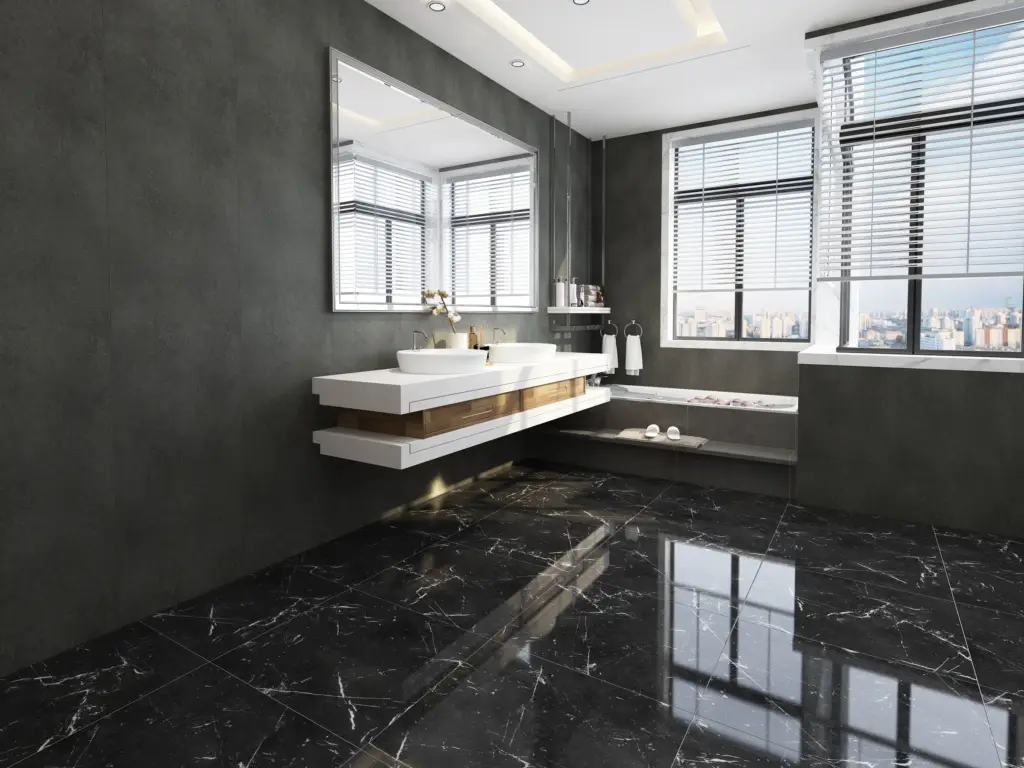
Благодаря своим уникальным свойствам стеновые панели SPC становятся все более популярными как для жилых, так и для коммерческих помещений с впечатляющим набором функций и преимуществ.
Из чего состоит стеновая панель SPC?
Стеновая панель SPC имеет тот же основной состав, что и Напольное покрытие SPC, с основным отличием в их размере и применении.
Как и их аналоги для напольных покрытий, эти панели состоят из нескольких ключевых компонентов, которые способствуют их прочности и функциональности. Вот разбивка их основных элементов.:
- Известняк (карбонат кальция): Обеспечивает вес и стабильность, повышая долговечность.
- Поливинилхлорид (ПВХ): Обеспечивает гибкость и устойчивость к воздействию окружающей среды.
- Стабилизаторы: Убедитесь, что панели сохраняют свою форму и целостность с течением времени.
- Износостойкий слой: Прозрачное покрытие, повышающее устойчивость к царапинам и защищающее от износа.
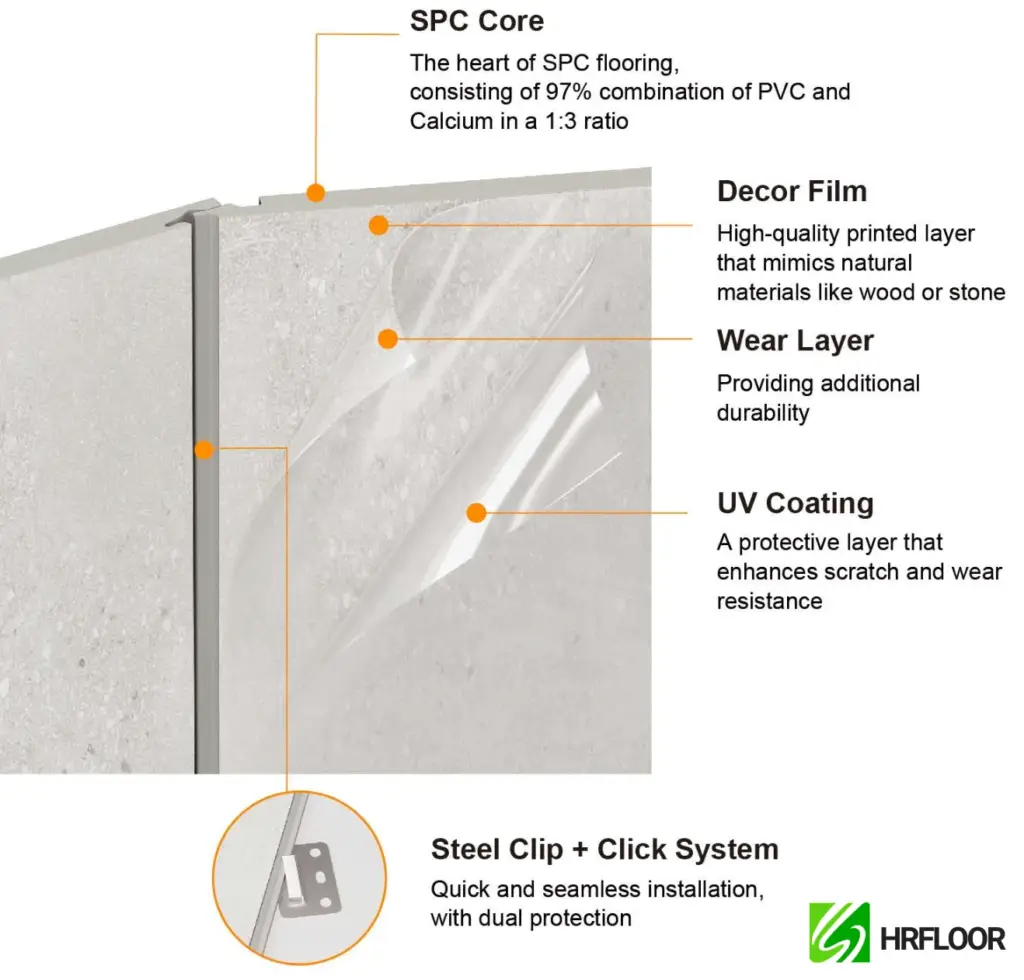
Стеновая панель SPC ПРОТИВ Напольного покрытия SPC
Хотя стеновые панели SPC и напольные покрытия SPC имеют схожие основные материалы, они существенно различаются по нескольким аспектам в зависимости от их конкретного применения:
- Толщина слоя износа
- Напольное покрытие SPC: Имеет более толстый износостойкий слой (0,3-0,7 мм) для защиты от пешеходного движения и тяжелой мебели.
- Стеновые панели SPC: Имеют более тонкий износостойкий слой (примерно 0,2 мм), поскольку стены подвергаются меньшему прямому физическому контакту.
- Различия в размерах
- Напольное покрытие SPC: Поставляется в виде досок меньшего размера для облегчения монтажа и замены
- Стеновые панели SPC: Доступны в больших размерах (обычно длина 2400 мм x ширина 600 мм) для более эффективного покрытия поверхностей стен и создания меньшего количества швов.
- Способы установки
- Напольное покрытие SPC: В первую очередь опирается на систему click-lock (например, Unilin, Валиндж, i4F) для установки
- Стеновые панели SPC: Используют комбинацию:
- Система Click-lock для подключения панели к панели
- Клеевая основа для дополнительного сцепления со стеной
- Стальные зажимы для повышения устойчивости и надежного монтажа
Эти различия отражают различные требования и проблемы вертикального и горизонтального применения, обеспечивая оптимальную производительность при соответствующих применениях.
Основные преимущества стеновых панелей SPC
Стеновые панели SPC решают несколько общих проблем, присущих традиционным стеновым материалам. Вот несколько ключевых преимуществ:
- Водонепроницаемость: В отличие от дерева или МДФ, панели SPC на 100% водонепроницаемы;
- Огнестойкость: Стеновые панели SPC обладают огнестойкими свойствами;
- Долговечность: Эти панели ударопрочны и выдерживают интенсивное использование без деформации или растрескивания.
- Низкие эксплуатационные расходы: Чистка проста, достаточно простой салфетки.
- Экономическая эффективность: Затраты на покупку и монтаж дешевле, чем на плитку.
Продукция и Технические характеристики
Стеновые панели SPC представляют собой современное решение для внутренних стен, сочетающее в себе долговечность, эстетическую универсальность и простоту монтажа.
Наши Продукты
Наша продукция из стеновых панелей SPC получила значительное международное признание и в настоящее время успешно продается во многих регионах.
Это глобальное присутствие отражает качество и надежность нашей продукции, отвечающей различным международным стандартам и требованиям.
Технические характеристики
Ниже приведены типичные технические характеристики стеновых панелей SPC:
| ТЕСТИРУЕМЫЙ ПРЕДМЕТ | СТАНДАРТНЫЙ | ЕДИНИЦА ИЗМЕРЕНИЯ | РЕЗУЛЬТАТ ТЕСТА |
|---|---|---|---|
| Плотность | EN 323 | [кг/м3] | 2150 ± 50 |
| Прочность фиксации | ISO 24334 | [кН /м] | Длинная сторона: 3,0 Короткая сторона: 5,0 |
| Стабильность размеров | ISO 23999 | [%] | ≤ 0.1 |
| Перепады высот между панелями пола | ISO 24343 | [мм] | ≤ 0.2 |
| Остаточное Углубление | ISO 10582 | [мм] | ≤ 0.08 |
| Плоскостность | ISO 10582 | [%] | Длина: 0.05Ширина: 0.01 |
| Поведение при пожаре | EN 13501-1 | [класс] | Bfl-s1 |
| Устойчивость к скольжению | EN 16165 | [класс] | R10 |
| Сопротивление скольжению | EN 14041 | [класс] | ДС |
| Теплопроводность (λ) | EN 12664 | [Вт/мК] | 0.135 |
| Выброс формальдегида | EN 717 | [класс] | E1 (Не содержит формальдегида) |
| ЛОС | EPA 5021 | Не Обнаружено | |
| Фталаты | ASTM D3421 | Не Обнаружено |


